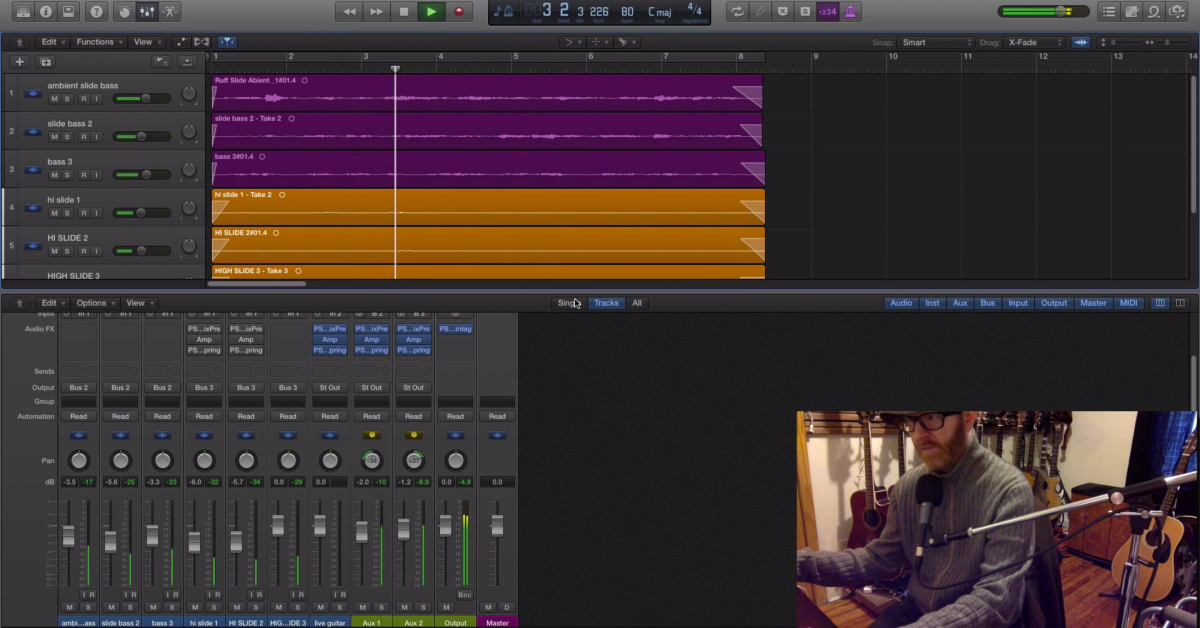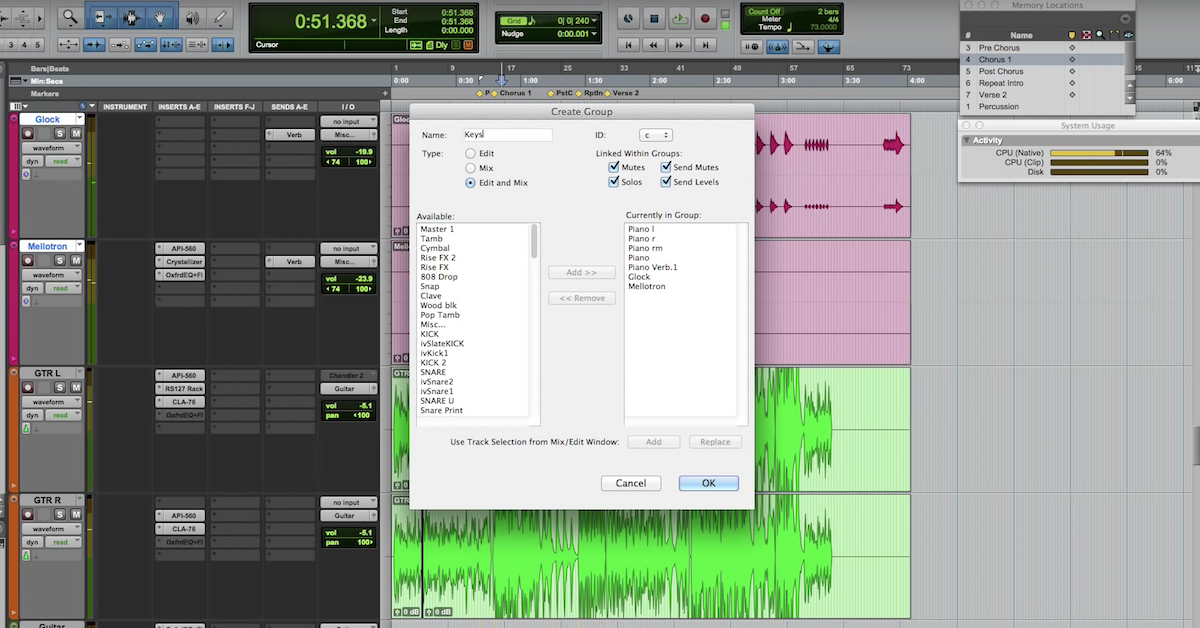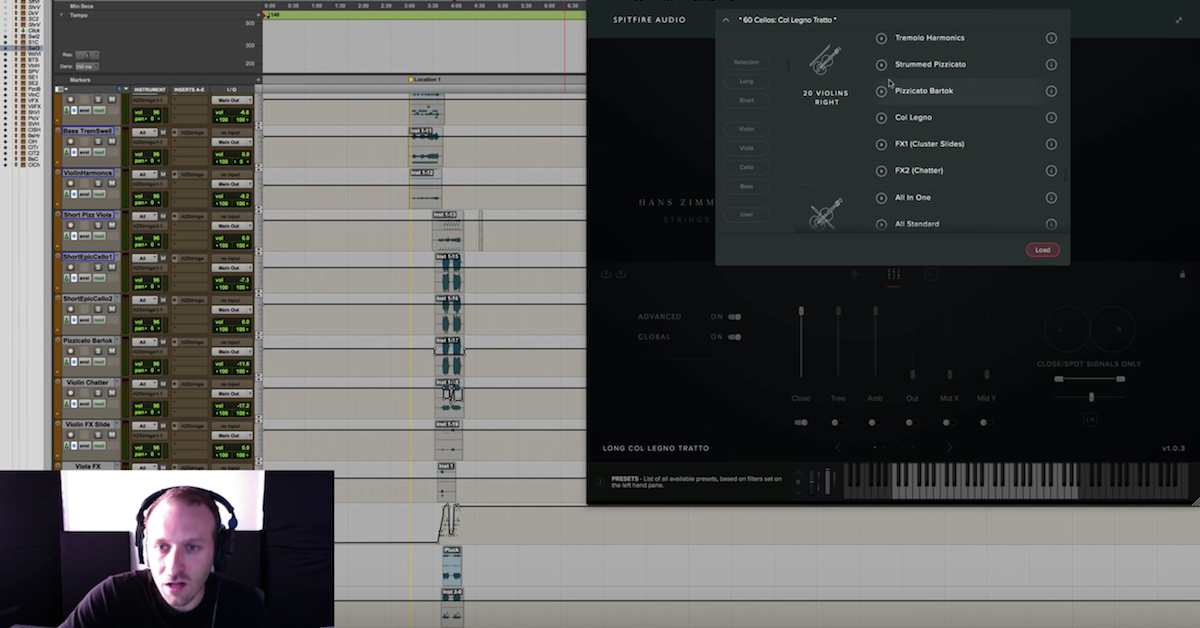6 Tips for Adding String Arrangements to Your Music
Article Content
Lots of producers dream about adding epic orchestral arrangements to their music. Hearing a song come to life with a vibrant string arrangement can be a revelation, but getting there can involve a steep learning curve for those who are unfamiliar with “classical” instruments. It can be hard to know just how to integrate unfamiliar instruments into your music, and how to best make use of your studio time with session players.
Though “orchestral arrangements” potentially includes a wide range of tonal colors — winds, brass, percussion, harp — in this article, I’m going to be focusing on strings specifically. If you’re considering adding strings to your music but aren’t quite sure how to approach it, read on, my friend!
Consider the Size of the Ensemble
One of the most important considerations when adding string arrangements to pop music is the size of the string group. The number of string players heard on a recording can vary widely, probably more so than any other instrument, ranging from a solo player all the way up to a 60-piece orchestral string section (~30 violins, ~10 violas, ~20 cellos and basses). String groups of different sizes have their own strengths and limitations, and writing parts that are tailored to the nature of the group is crucial to getting the most out of a string section
Soloist
The smallest string group you could feature on a recording is a section of one. A solo string player isn’t going to achieve the crushingly epic sound of an orchestral string section, but that’s sort of not the point. A soloist has access to the full expressive qualities of their instrument. A soloist can “speak” on their instrument and play difficult, technical passages with much more clarity than a large section can.
Listen to the violin solo at the end of The Who’s “Baba O’Riley” for an iconic example of a string soloist in pop music. The improvisational flourishes, fluid expression, and shifting tempo would be difficult (or impossible?) to achieve with 20 violins playing in unison, but a soloist is right at home with this kind of playing.
Though there are certainly instances where a lush hall reverb might be appropriate for a soloist (when the sound you want is more “classical”), an intimate room ambience is often more appropriate. If the room you’re tracking in sounds good, a couple of well-placed room mics may be enough ambience without adding any reverb. Compress a solo string player like you would a vocalist (try something smooth like an LA-2A and don’t overdo it!). Look out for shrillness in the upper midrange, especially with violin/fiddle, and add air and shimmer above 8 kHz when necessary.
Chamber Ensemble
What exactly constitutes a chamber string ensemble is fairly vague. The term could refer to a duo or a group of 20-something players. The most iconic small string ensemble is probably the string quartet: two violinists, a violist, and a cellist — which functions sort of like a single-serving orchestral string section while retaining the fleet-footed and expressive qualities of a soloist.
Curtis Mayfield’s “Move On Up” (which was sampled on Kanye West’s “Touch the Sky”) offers a great example of a small string group in a pop setting. Listen to the small violin ensemble responding to his vocals in the first verse. Their sound is more full than a soloist’s would be, but they’re still able to pull off some bends and slides that an orchestral section wouldn’t be nimble enough to land.
Use ambient effects for a chamber group similar to how you would for a soloist. The “portable string section” may call for a longer, more lush reverb, while a quartet may sound more at home in a smaller space. If the players track live together, process their individual close mics together as much as possible to avoid phase issues.
Orchestral Section
Sometimes, a couple of players just aren’t going to cut it, so you call in the big guns (eh, or at least a sampled version of the big guns). Orchestral string sections bring dozens of players together to create a massive sound that is, for better or for worse, hard to achieve any other way. If you’re using a sample library, chances are it’s emulating a big orchestral section on its default setting. Orchestral strings don’t have the dexterity or clarity of a soloist or smaller group, but they make up for that with shimmering textures and an enormous dynamic range.
Lana Del Rey’s music offers lots of more contemporary examples of large string sections in pop. Listen to the strings throughout “Born to Die.” The group isn’t the sort of 60-piece string section you might hear in a major symphony orchestra, but it’s far larger than the groups in the previous examples.
There’s no way around drenching a large string section in reverb. Whether it’s a digital hall reverb or just the natural ambience of a scoring stage, ambient tones are just a necessary ingredient in the sound of a big string group. Process the whole section together as much as possible for the most natural sound. The dynamic range of a string section is sort of a defining feature, so it’s wise to keep compression tasteful unless you’re seeking a really unnatural sound. If your section includes cellos or basses, you will likely need to make some calls about how strings will split the lower registers with the bass and kick.
Vary the Number of Voices
If what you’re after is a natural/traditional string sound, one of the easiest ways to blow it is to write a part with big block chords moving at one monolithic pace. When mocking up a score on a MIDI keyboard, or simply programming sampled strings, the temptation can be strong to just “play the section” like you would a synth pad. And to be sure, some great recordings have been made that feature strings used in this way. But if the goal is a realistic, traditional string sound, try to think of the section as a group of individual units, sometimes working directly together and sometimes filling different roles.
Some of my favorite strings in a pop setting can be found on T Rex’s recordings produced by Tony Visconti. The strings on “Cosmic Dancer” are an especially strong example of a string arrangement that reaches lush, climactic moments, but often scales things down to simple unison lines that stay out of the way of the vocals. Just listen to the whole damn thing.
https://www.youtube.com/watch?v=hJrc44huoLc
Alternating between full and sparse harmonies is a major ingredient in the string sound you just heard, and so is my next point …
Rhythmic Variety is Crucial
Whether your string section is a chamber group or a canned orchestra, the different members of the string family are each capable of different types of articulation and rhythmic playing styles that can be put to use to create movement and contrast. Try having parts alternate between rhythmic chugging and fluid melodic playing, subtle textures and bold flourishes.
Nico’s version of the Jackson Browne song “These Days” received a legendary string treatment that Nico reportedly hated. The song’s instrumentation features just voice, guitar, and strings (an intimate chamber group, for those keeping score.) Listen to the way the strings alternate between pulsing and fluid, rhythmic and melodic, providing not just ornamentation but also the backbone of the song.
https://www.youtube.com/watch?v=1bVKgQ1-Rvk
Don’t Forget the Dynamics
Bowed string instruments have an incredible dynamic range, from whisper-quiet (pianissimo) to epic and soaring (fortissimo). They’re also capable of a wide variety of articulations, fluid and melodic (legato), sharp and rhythmic (staccato), plucked (pizzicato), nasal and ghostly (sul ponticello), to name a few.
If you’re arranging string parts for real human string players, it’s worth taking the time to familiarize yourself with the terminology used to describe dynamics and articulations, and to include it in a written score. “Band” musicians often favor a more laid back approach to working out arrangements, developing parts on the fly. Classical string players, as a whole, like to sit down in front of a score that tells them just what you’re looking for. Learn how to ask for what you want in *their* musical language, and they will happily return the favor.
Make the Strings the Stars of the Show
Ok, full disclosure, this article was written by a violinist, and yes, he is now telling you that the violin is the most important thing in your music. If you’re adding strings to “pop” music, this point is legitimately something to seriously consider. Chances are, you fall into one of two groups:
- You don’t typically use strings in your music, and when they do show up it’s a special moment
- Strings are a definitive part of your sound
Whichever group you’re in, highlighting that string part is going to be important! If strings will be playing a rhythmic role, consider paring down the rhythm section. If the strings are functioning more as a counter-melody to the lead vocal, or are filling out chord changes, consider pushing guitars and keys behind them in the mix. Yeah, the guitarist might be a little butt hurt, but they’ll get over it.
… But Save Room for the Vocals
Ok, so there is one caveat to the previous point. The lead vocalist is still, usually, the real star of the show. And, to complicate things further, string instruments can really step on a lead vocal. Violins share a lot of their register with higher vocal ranges, and cellos with lower ones. If you’re not careful, strings and vocalists can really compete for space.
Bobbie Gentry’s “Ode to Billie Joe” features a great example of a string section carrying a ton of weight without getting in the vocalist’s way. Strings were added to a bare-bones demo, and the resulting recording unseated The Beatles from the top of the charts. It beautifully showcases many of the tones a string section is capable of, and it’s an excellent lesson in how to have strings do a whole lot without stepping on a vocal.
The easiest way to get strings and vocals to share space is to keep them out of each other’s way. Have the strings play quiet, textural parts underneath vocals, filling in melodies only in gaps between vocal phrases. For even more separation, let the lead vocal sit center stage while the strings get panned out to the sides.
From there, use EQ to carve out frequency ranges where the lead vocal sits — lower midrange for the fundamental frequencies and upper midrange for clarity and articulation. (See my article on taming midrange in a busy mix for some more specific ideas about how to do this.)
For those of us who are used to making music in a band setting — or a purely digital one — adding string arrangements can involve taking a big step out of our comfort zone. Though the potential pitfalls can mean expensive mistakes when hiring players, string arrangements can really elevate a piece of music to another level. Don’t let the learning curve scare you — try taking a chance on adding some new colors to your music!









